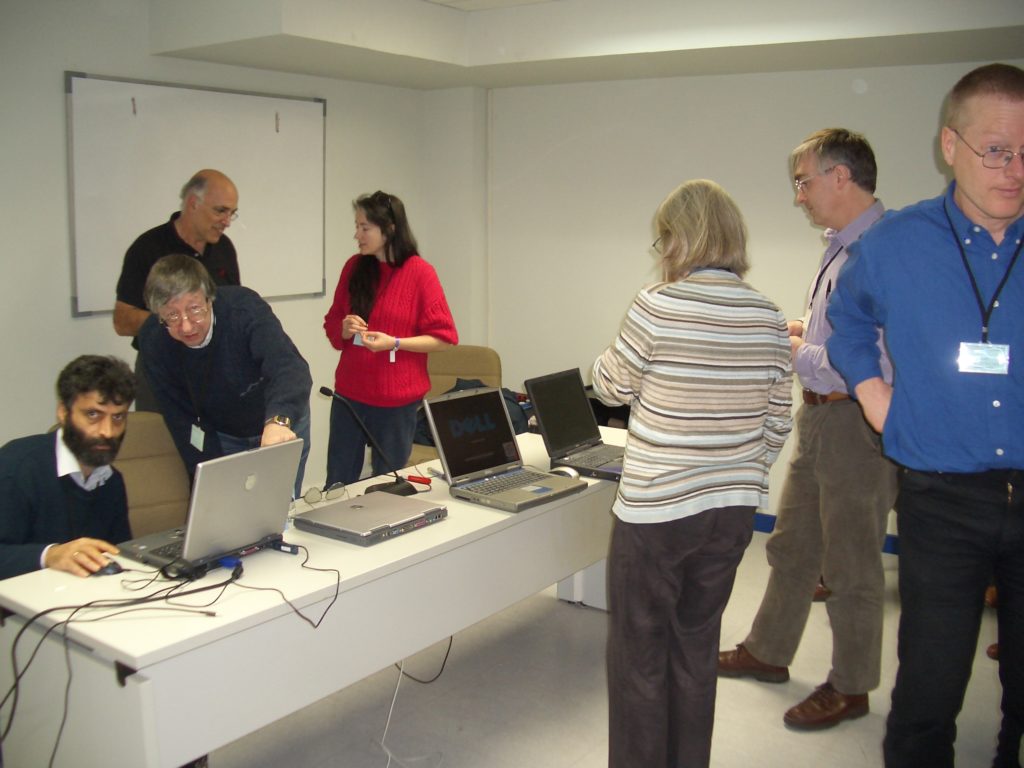 Doctor Alexei Vagin, who died on 25th March 2023, contributed greatly to the practice of X-ray crystallography for over 50 years. He organised the (sparse) computing services of the protein group at the Moscow Institute of Crystallography during the 1970s and 80s, then after his move to Western Europe in 1994, made major software contributions for macromolecular structure solution, all now distributed through CCP4.
Doctor Alexei Vagin, who died on 25th March 2023, contributed greatly to the practice of X-ray crystallography for over 50 years. He organised the (sparse) computing services of the protein group at the Moscow Institute of Crystallography during the 1970s and 80s, then after his move to Western Europe in 1994, made major software contributions for macromolecular structure solution, all now distributed through CCP4.
Alexei was born in1944 in Perm, the most easterly city in Europe, located in the Urals near the natural borderline between Europe and Asia. For his degree he studied applied physics at the prestigious Moscow Engineering Physics Institute, specializing in mathematical techniques and computer programming. He started his scientific career in material science – his first publication in 1966 was concerned with the design of blast furnaces, but soon he became more interested in crystallographic method development and moved to the protein group of the Moscow Institute of Crystallography. He was part of the team which solved the structures of bacterial ribonuclease in 1977, catalase in 1979 and was the key player behind the computational part of the latter project where he applied non-crystallographic symmetry (NCS) for phase improvement. From then on, he was involved in almost all the protein structure analyses in the laboratory, developing and implementing many tools. His PhD thesis, awarded in 1982, described an improved and faster Translation function for use in molecular replacement calculations. He organised the software into BLANC, a comprehensive package with almost all necessary programs and libraries for crystallographic calculations, from experimental phasing to molecular replacement and map calculations.
In 1994 he took an EU funded position in Brussels as a member of the team working on CRITQUAL. The Biotech contract he joined brought together in a complementary manner several established European laboratories working in the field of macromolecular 3D coordinate provision and analysis. Atomic resolution structures solved in Hamburg revealed that some of the underlying assumptions about protein conformation derived from the existing databases developed in the EBI and Uppsala were sometimes too restrictive, and Alexei in Brussels was able to quickly recast the new insights into a well-designed computer readable form to be used within the refinement program framework being developed in York. He found an elegant solution to the problem of describing “LINKS” – between peptides, nucleic acids, and to covalently linked ligands. The restraint formats (mmCIF) he helped design are now accepted as standard.
In 1998 he moved to York and re-joined an active crystallographic laboratory, where he stayed till his retirement in 2010. This was a wonderfully productive period for him, and the community of structural biologists continue to benefit from his work. The program SFCHECK developed in Brussels to assess the quality of the agreement between model and experimental data was modified for inclusion in the CCP4 suite. He contributed to further developments of Refmac, advised lab members on programming problems, structure solution, and partying. He was a highly sought-after tutor for training workshops, guaranteeing excellent teaching and good fun for all. But his life-long passion was for improving the methodology of molecular replacement. In 1997 he published a description of a “new” package, MOLREP, in J. Appl. Cryst. before releasing it through CCP4.
MOLREP contained many innovative features that exploited information easily obtained from the experiment. For example, the package was able to analyse the model-free Patterson maps to consider NCS and pseudo-translation if present. In this package, Alexei introduced a translation function which considered all possible symmetry equivalents together. He also improved methods for searching for multiple copies and checked any solutions against the known NCS, etc. One distinctive feature of Alexei’s approach to software development was a user-centred perspective and he took pains to report results and data analyses with informative graphs and extensive text. MOLREP was an instant hit and is still widely used by crystallographers and electron microscopists. Searching the Protein Data Bank (PDB) for references to it yields the amazing score of 36,223 entries.
Once Alexei was reasonably satisfied with the software, he turned his attention to model selection. Alexei designed a database, distributed first in the package BALBES, and later as MorDa. This weeded the hits to include only the best model, and then catalogued whether the model structure existed as an oligomer, whether it could be split into flexible domains, and then used this information to design an optimal search strategy.
Alexei will be remembered for his innovative science, and for his interest in and kindness to his many colleagues, both in Moscow and Europe. But of course, he was not just a scientist and the many friends who mourn him remember his humour, his generosity both at work and play, his wide-ranging conversations. He loved Russian culture and his Russian friends, but never Russian politics. He was rather a citizen of the world with a passion for French chanson and movies, and deeply in tune with British black humour which matched his own. His real homeland was the international community of protein crystallography, and that is where he will be remembered with love and gratitude.
Eleanor Dodson, Jan Dohnálek
A full version of this obituary can be found in Acta Crystallographica
Dodson, E. (2023). Acta Cryst. D79,
https://doi.org/10.1107/S2059798323003364.

